Diversity And Inclusion In Field Biology
First published in Sanctuary Asia,
Vol. 42
No. 4,
April 2022
At its core, the world of environmental conservation is diverse and multifaceted, with people transcending barriers of all sorts in order to do what needs to be done to protect the future of the planet. Yet, barriers of patriarchy and tradition have remained a constant thorn in the side for many. Our cover story in this issue highlights women-identifying voices as they share their journeys in science, conservation and the impactful work they do to conserve our natural world.
Dhanusha Kawalkar | Indian Swiftlet
“My current research focuses on the breeding ecology of the Indian Swiftlet Aerodramus unicolor and understanding its conservation requirements in western Maharashtra. I am exploring all possible potential habitats of the species including man-made caves, natural caves, forts and offshore islands of western Maharashtra. I joined SACON in 2017 as a Junior Research Biologist, as part of one of the most successful community-based conservation programmes in India, ‘The Edible-nest Swiftlet Aerodramus fuciphagus Conservation Project’ led by Dr. Manchi Shirish S., Principal Scientist, SACON, and Founder member, SAI. He introduced me to the fascinating world of caves and bio-speleology (the science of studying cave animals). Realising how crucial it was to fill the knowledge gap, which still exists in cave sciences, my core interest in cave ecology, bio-speleology and community development began to dominate my purpose.
Initially, people found it hard to believe that a woman could even think of visiting uninhabited islands, living inside and exploring caves, while breathing in guano, eating strange foods, and living far away from her family. But none of these doubts ever stopped me from following my passion for caves. I followed my calling, and have explored and studied over one hundred of them in the Andaman Islands and in Maharashtra. This is a lifelong journey for me. Caves are the lone source of inspiration in my life. The unknown treasures they hold motivate me to go that extra mile to explore the secret lives of cave-dwelling animals. I am delighted to have been able to contribute to the conservation and research of these under-studied ecosystems and I urge more women to be a part of this important process.”
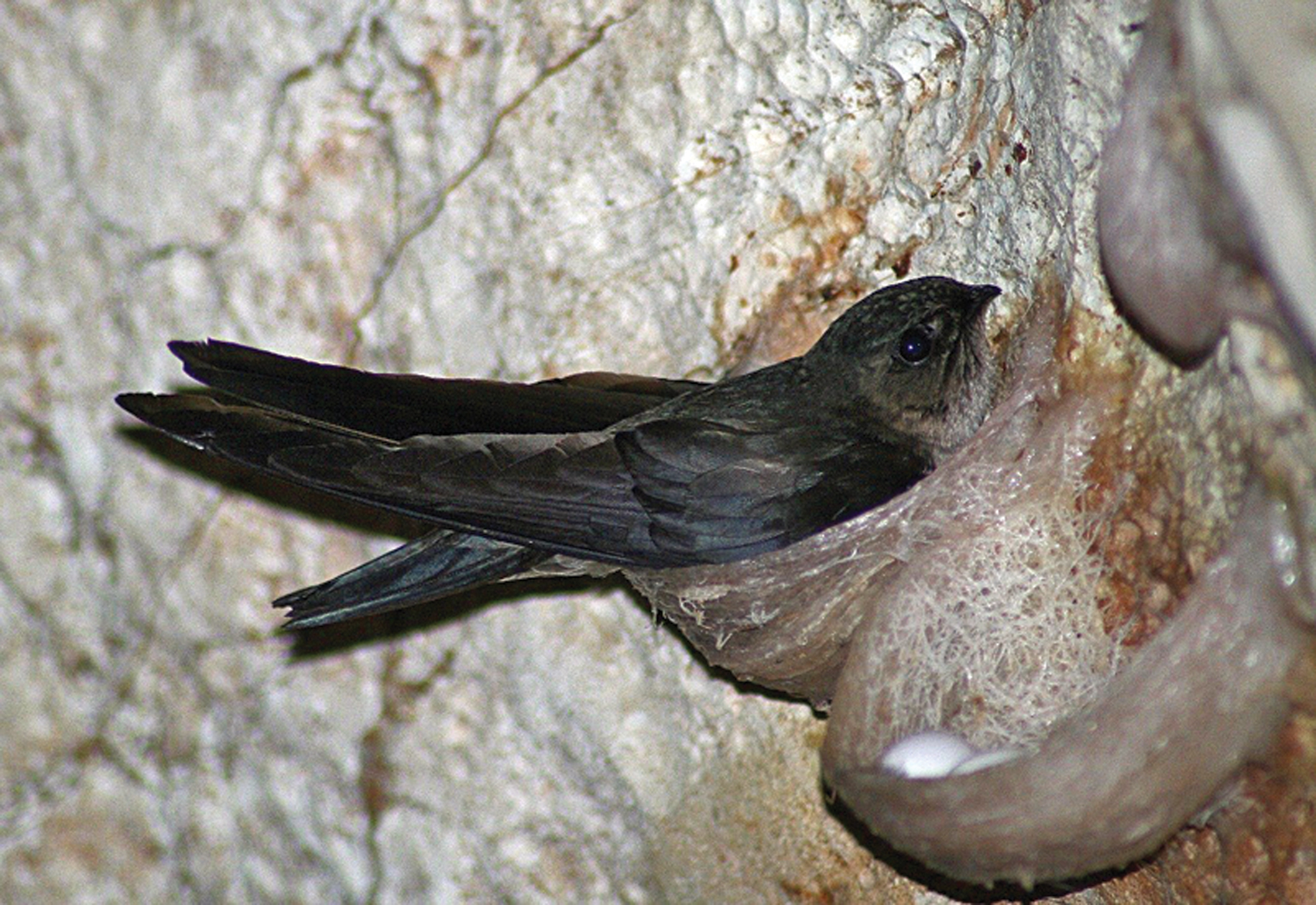
The Edible-nest Swiftlet is so named for its bracket-shaped white nest, which is made out of the bird’s solidifed saliva. The species breeds in colonies in caves or rock crevices. Photo: Prathamesh Gurjarpadhye.
Openings in the Earth
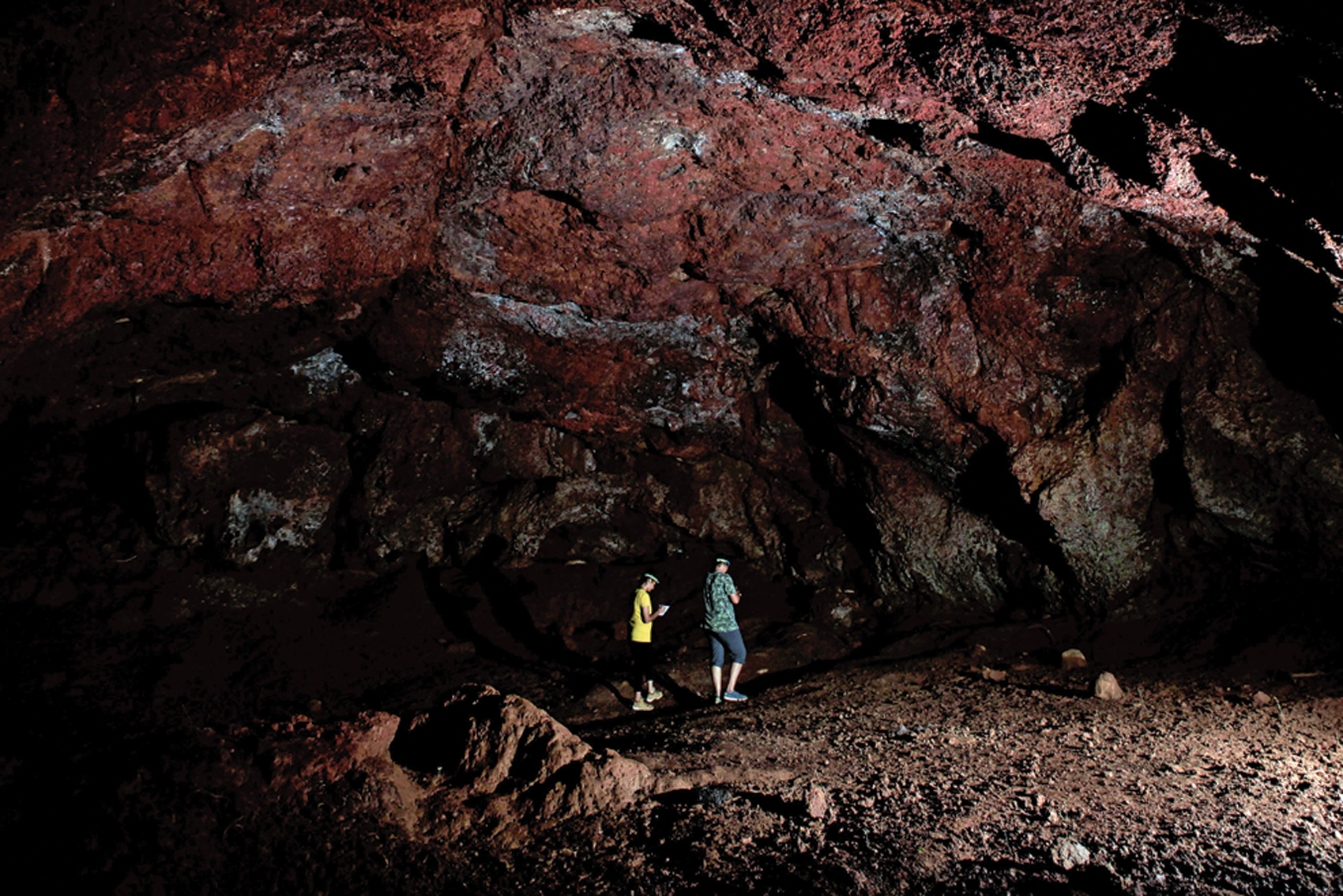 Exploring laterite caves of Maharashtra. Photo: Kaka Bhise.
Exploring laterite caves of Maharashtra. Photo: Kaka Bhise.
Caves and karstland (landscape comprising crevices, jagged rocks, sinkholes, and underground caves, crafted by water that dissolves limestone and dolomite) are amongst the most neglected and understudied ecosystems on our planet. Even before we understand the functional roles of caves and karsts, humans have caused these ecosystems to be threatened. This will probably result in the extinction of cave-dwelling species, even before we have documented them.
Senior Research Biologist and PhD Scholar, Sálim Ali Centre for Ornithology and Natural History (SACON); Chief Executive Officer, Speleological Association of India (SAI)
Himani Nautiyal | Himalayan Langur
“It was 6:15 a.m… just another day in 2015. I sat alone, observing a group of Himalayan langur in the distance, as freezing winds blew in from the snow-covered mountains around us. I observed some of the females looking in one direction. Through my binoculars, I focused on one female and noticed tiny hands gently but firmly grasping her fur gently. “Is that a newborn?” I whispered to myself. It looked exactly like a human baby – face, eyes, eyebrows, head, hands… precisely like us!
I had been following this group of langurs for two months. I was overcome with emotion. My curiosity to know more about our close relatives had begun. Seven years on, I still work on Himalayan langurs and have now established a long-term primate behaviour research site in the Himalaya in Uttarakhand.
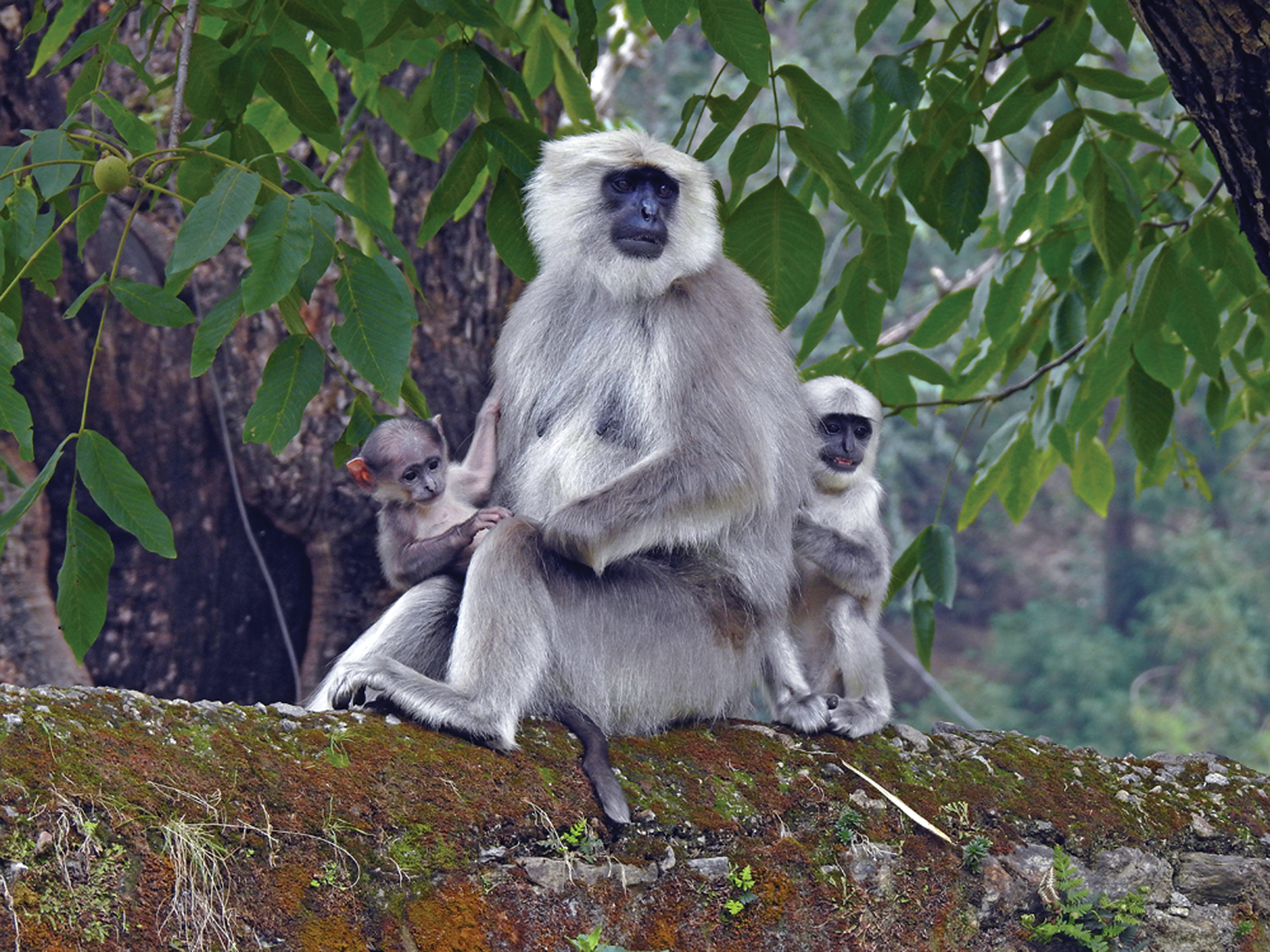
A Himalayan langur adult with infants. Photo: Himani Nautiyal.
When I first began undertaking field research, I was unaware of the challenges that Himalayan langurs face in Uttarakhand. Gradually, however, by observing both humans and langurs, I began to understand why such distressing negative interactions occurred. My research seeks to find peaceful coexistence models that could work for all manner of species in their interactions with Homo sapiens. Oak trees play a vital role in this relationship, in this part of the Himalaya. Here agricultural production is low on account of raids on crops by wild animals. This is why people prefer to keep more livestock to survive and this in turn increases their dependency on oak trees, which supply them with fodder and firewood. The result? Forest fragmentation and degradation. This ends up negatively affecting langurs whose survival is linked to the health and availability of oak leaves and fruit. This situation forces langurs to forage for crops… leading to stress between humans and animals. It’s a vicious cycle.
At my study site, almost 95 per cent of agricultural work and the collection of fodder and firewood is done by women, which is why my team and I began working to improve their socio-economic status. I have found that kiwi fruit cultivation could present an elegant solution. Kiwis have a high market value, but they are not the preferred food for wild species. What is more, cultivating kiwi fruit involves less labour. We have made a start by working with 100 women farmers and have helped them establish a sustainably functioning kiwi fruit businesses. Simultaneously, we are teaching kids how to help restore degraded forests with help from other members of their own community.
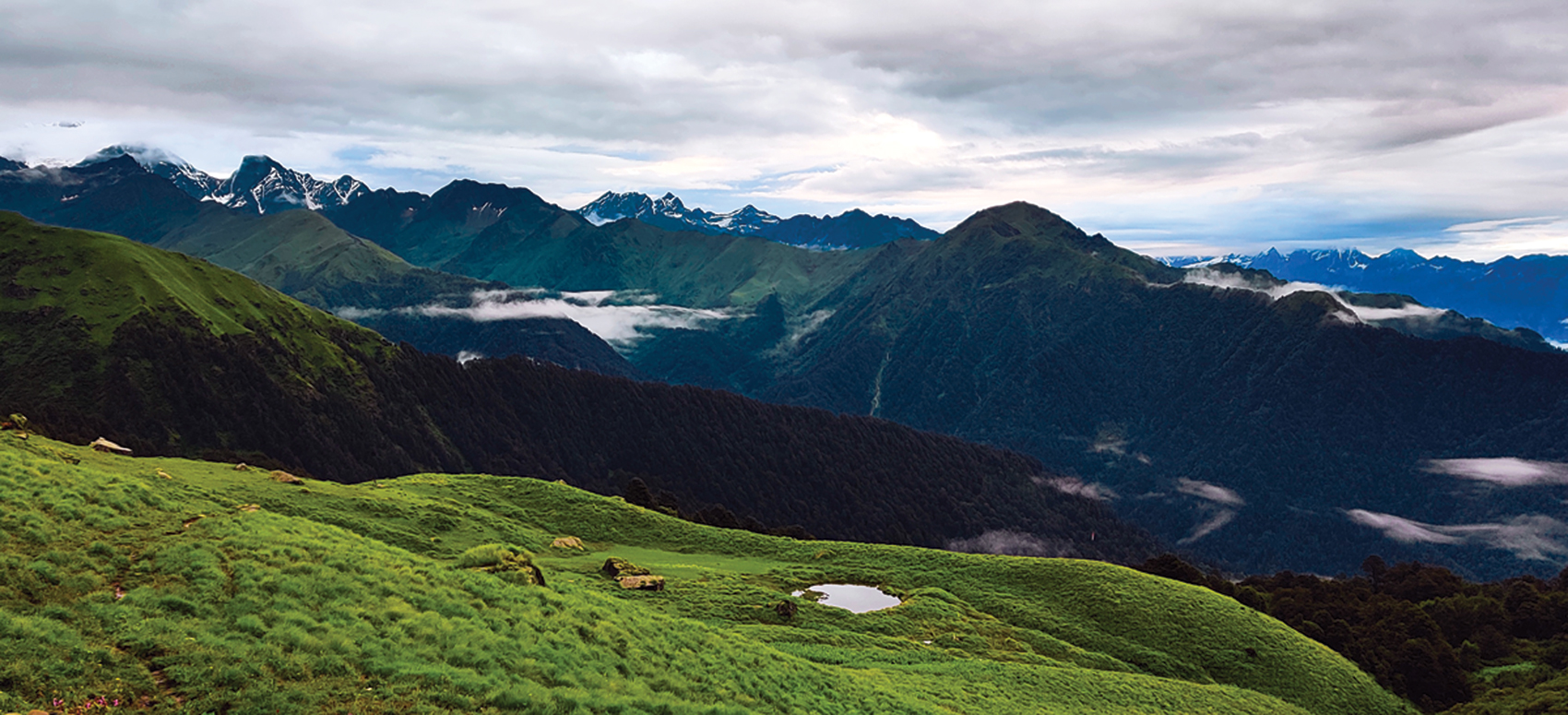
Himani Nautiyal has been studing Himalayan langurs in Uttarakhand for seven years. Photo: Himani Nautiyal.
I strongly believe these efforts will not only bring about peaceful coexistence between people and wildlife, but also strengthen local people’s economic status and improve their education. It stands to reason that this positive outcome would help improve and conserve the Himalayan ecosystems by reducing the pressures on its key species, such as oaks.”
Primatologist and Conservation Biologist
Ranjini Murali | Snow Leopard
“My love for nature was born in the forests of the Western Ghats, where my family spent each summer. After a Bachelor’s degree in Microbiology, Zoology, and Chemistry, and a Masters in Environmental Science, I began by volunteering with the Nature Conservation Foundation (NCF) for their project on Irrawaddy dolphins in Odisha’s Chilika Lake. I then worked as a research assistant with NCF’s Western Ghats programme on an amphibian project for a year. And it was from there that I joined as a Conservation Coordinator for the NCF’s high-altitude programmes that set me on the path of snow leopard research and conservation.
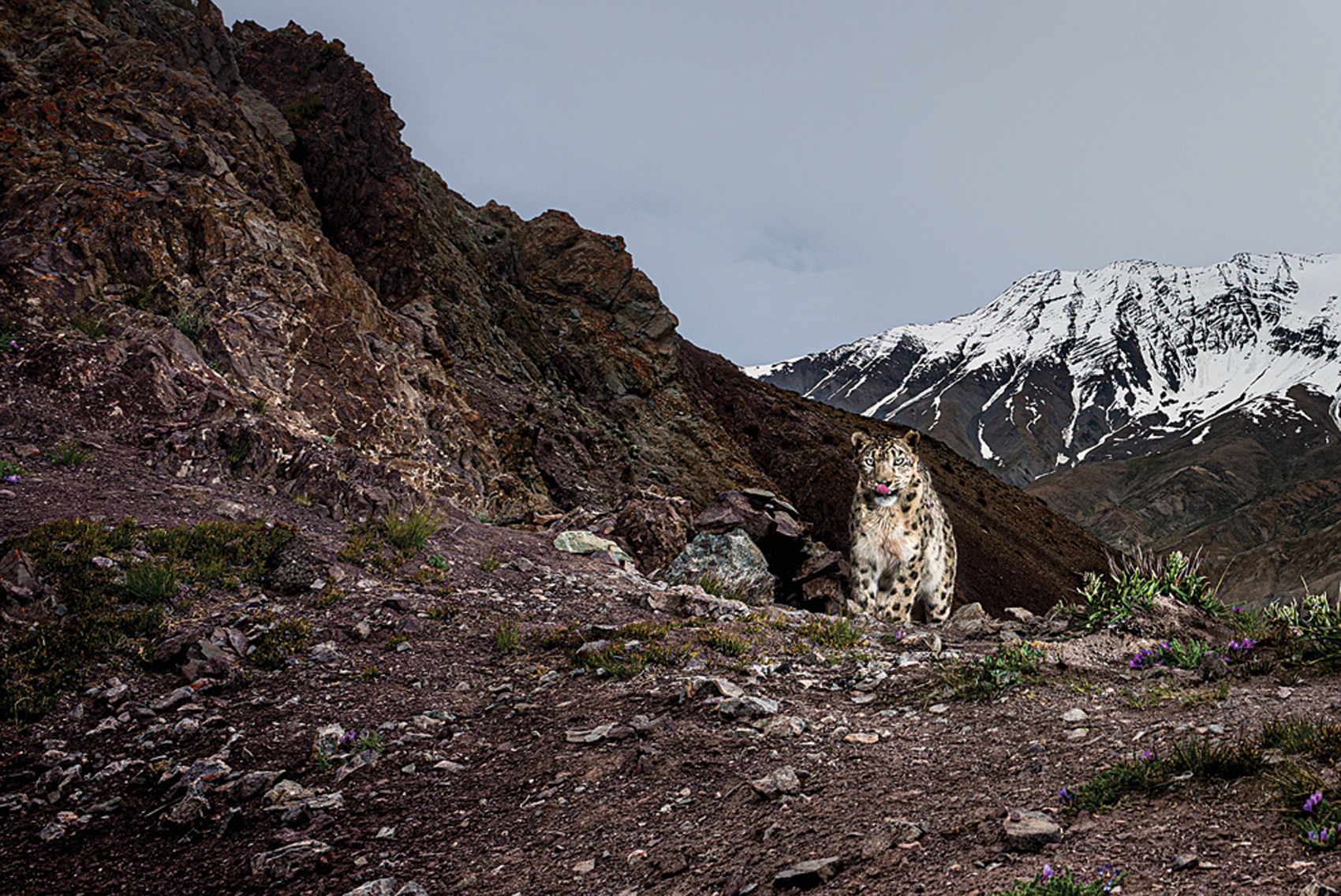
Snow leopard populations are estimated to be under 10,000 worldwide, and are listed as Vulnerable. Conservation strategies involve working closely with the communities that share space with the species. Photo: Behzad Larry.
I was 22 when I visited Spiti’s snow leopard landscapes for the first time. Located above the treeline, at over 3,500 masl., you can see every dip and rise of the bare earth, and a multitude of soil colours. At the time, I worked closely on conservation programmes with communities in the Spiti Valley. My colleagues from the Kibber village brought me up to scratch on the local ecology and culture as we worked in that incredible landscape, walking the mountains, and enjoying every moment of every day. At the end of my very first season, I was in love and I just knew I had to work here for as long as I possibly could.
I went on to pursue my Ph.D. with NCF on how people use, value, and manage resources in snow leopard landscapes. Through my career I’ve been very lucky to have the support of two important mentors: Dr. Charudutt Mishra and Professor Harini Nagendra. I currently work as a conservation scientist at the Snow Leopard Trust (SLT) where I support our research and conservation efforts in four range countries: India, Kyrgyzstan, Mongolia and Pakistan. Some of the topics I work on include community-based conservation, education, and capacity building. I also work with the Global Snow Leopard and Ecosystem Protection Programme (GSLEP), an intergovernmental alliance of snow leopard range countries, where I assist the Secretariat across the magnificent animals’ range. Our work at the SLT and GSLEP is geared toward securing the landscape for the future of both the snow leopard and local communities. I believe it is important to approach conservation through an interdisciplinary, landscape lens, partnering closely with local communities and governments.”
Conservation Scientist, Snow Leopard Trust; Fellow, IPBES, Values Assessment
Anuja Mital | Black Softshell Turtle
“I caught my first wild turtle in 2014 – a black pond hatchling from a muddy pool – while walking through a paddy field. When I looked up the species, I realised how threatened and under-studied freshwater turtles are in India. Little did I know I would spend the majority of my career years studying their ecology in the hopes of conserving them.
This was also the catalyst that led me to co-found Freshwater Turtles and Tortoises of India (FTTI), a community-science initiative to increase awareness and research on these imperiled species in India through the India Biodiversity Portal. I began estimating turtle populations along the Sarju and Ghaghra tributaries of the Ganges river in Uttar Pradesh and then moved on to studying the ecology and distribution patterns of turtles, gharials and mugger crocodiles across the entire stretch of the Ganges river. Over three years I had caught and tagged hundreds of turtles. These first-hand experiences also exposed me to the reality of the scale of anthropogenic pressures in these densely populated watersheds.
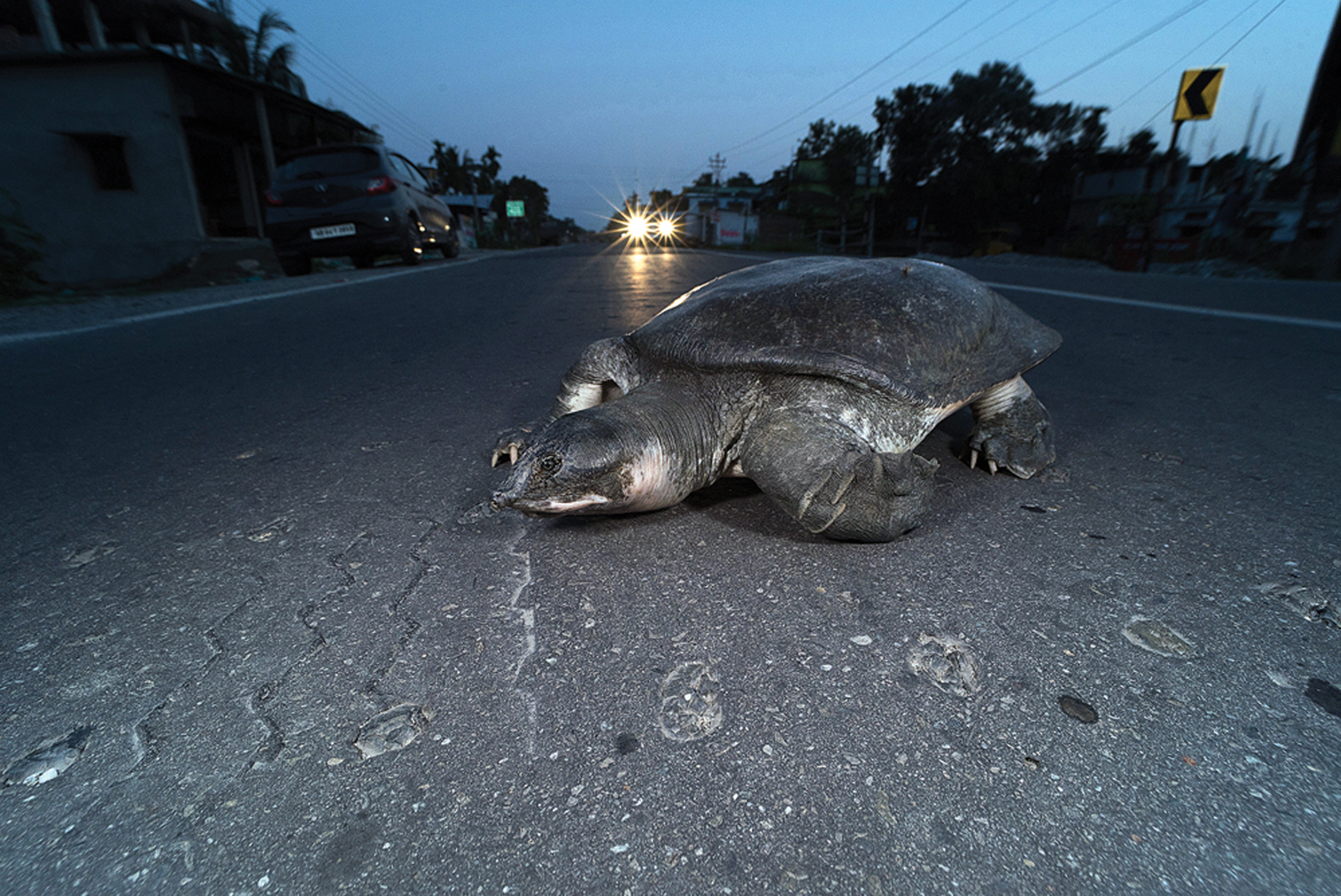
The black softshell turtle Nilssonia nigricans, was classified as extinct in the wild in 2002. The species was then rediscovered in the wild in the Brahmaputra floodplains in Assam, and since then, strong conservation measures are being implemented to protect it. Photo: Ripan Biswas.
Experiencing rough field conditions and challenges of being the lone woman in a team of researchers, field assistants, and boatmen also exposed me to the problems of gender disparity, bias, and casual sexism plaguing the field of herpetology and wildlife research in India. Since then, I have strived to surround myself with a network of colleagues and mentors that work towards equal opportunity and inclusiveness in this field. It is our collective responsibility to be allies to under-represented women and ensure safe working spaces. At FTTI, we mentor young women in this field. Through conservation education and outreach programmes, we hope to inspire young researchers to work towards studying turtle ecology and conservation.
Since 2019, I have been working on the distribution and habitat ecology of the Critically Endangered black softshell turtle in Assam along the Brahmaputra river and I am currently pursuing my Ph.D. in Integrative Conservation. I plan to continue exploring the freshwater ecosystem functioning of the Brahmaputra floodplains through a systems approach, to understand socio-ecological dynamic processes that can support the conservation of freshwater turtles and their habitats in the region.”
Herpetologist, Co-founder of Freshwater Turtles and Tortoises of India
Pritha Dey | Moths
“As a Master’s student, I came across ‘The Little Things That Run The World’ – an article by E.O. Wilson that spotlit the importance of insects in our ecosystem and their conservation. Though I did not understand most of it then, it left me curious. I have a keen eye for everything small, which is why I have always been interested in insect ecology as a student of Zoology. I started studying moths as an amateur when I joined the Wildlife Institute of India, as part of a project documenting moth diversity in the western Himalaya. I had the most wonderful experiences studying these insects in habitats ranging from pristine forests to seriously disturbed areas. The project eventually led to my Ph.D. The warmth of the local villagers, memorable field experiences, and the fact that I was adding to our knowledge of little-known moths of India, literally shaped and bolstered my career goals.
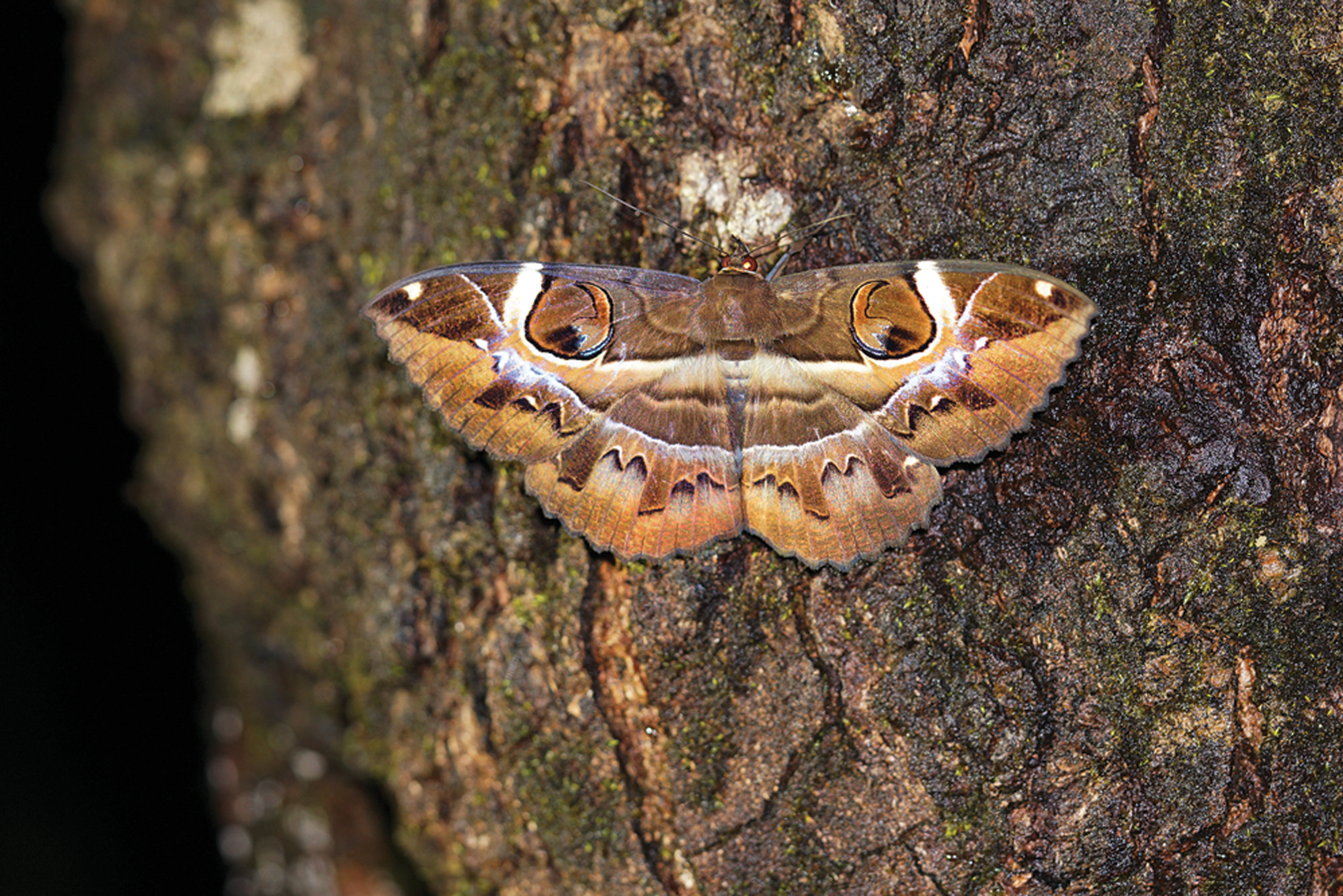
Owlet moths Erebus ephesperis have eye-like spots on their wings that act as an effective defense mechanism from predators. Photo: Pritha Dey.
As a biodiversity-rich country, India has unique moth diversity, but we lack effective geographic mapping, and an ecological understanding of moth distribution patterns. I intend to work towards a career in biodiversity research using a macroecological approach. Working in harsh conditions does pose physical and mental challenges, but the desire to spotlight a group of understudied insects has only grown stronger. “Moths are much more than the drab nocturnal insects surrounding our porch lights,” is my constant refrain.
I believe in translating science for people (which turned out to be critical in convincing my parents of the value of what I had decided to do!). I write popular articles on moths and of my journeys as I go about studying them. I love what I do. My work includes conducting workshops, spreading awareness and helping others share my fascination for these wonderful tiny nocturnal insects. I am involved with citizen-science projects, and am fortunate to be the Country Coordinator-India, for National Moth Week (part of an annual global moth-watching programme). I am also a team-member with Moths of India.
I want to stimulate curiosity in young minds, to help them better understand and appreciate nature by observing even the tiniest details. Curiosity is key… for there are many stories to tell… but we need to choose our characters wisely.”
Moth-biologist; Post-Doctoral fellow, Centre for Ecological Sciences, Indian Institute of Science
Rachana Rao | Seagrass
“Growing up in one of the busiest cities, Mumbai, I found peace in the wild, amongst birds, butterflies, grasses and trees. My visits to streams and seashores drove my curiosity towards wildlife and ecology. A Bachelor’s degree in Zoology, followed by a Master’s degree from the National Centre for Biological Sciences (NCBS), Bengaluru, further laid a firm foundation in this pursuit.
For the past three years, I have been working on marine flowering plants called seagrasses. They evolved from land plants and are like them in many aspects.
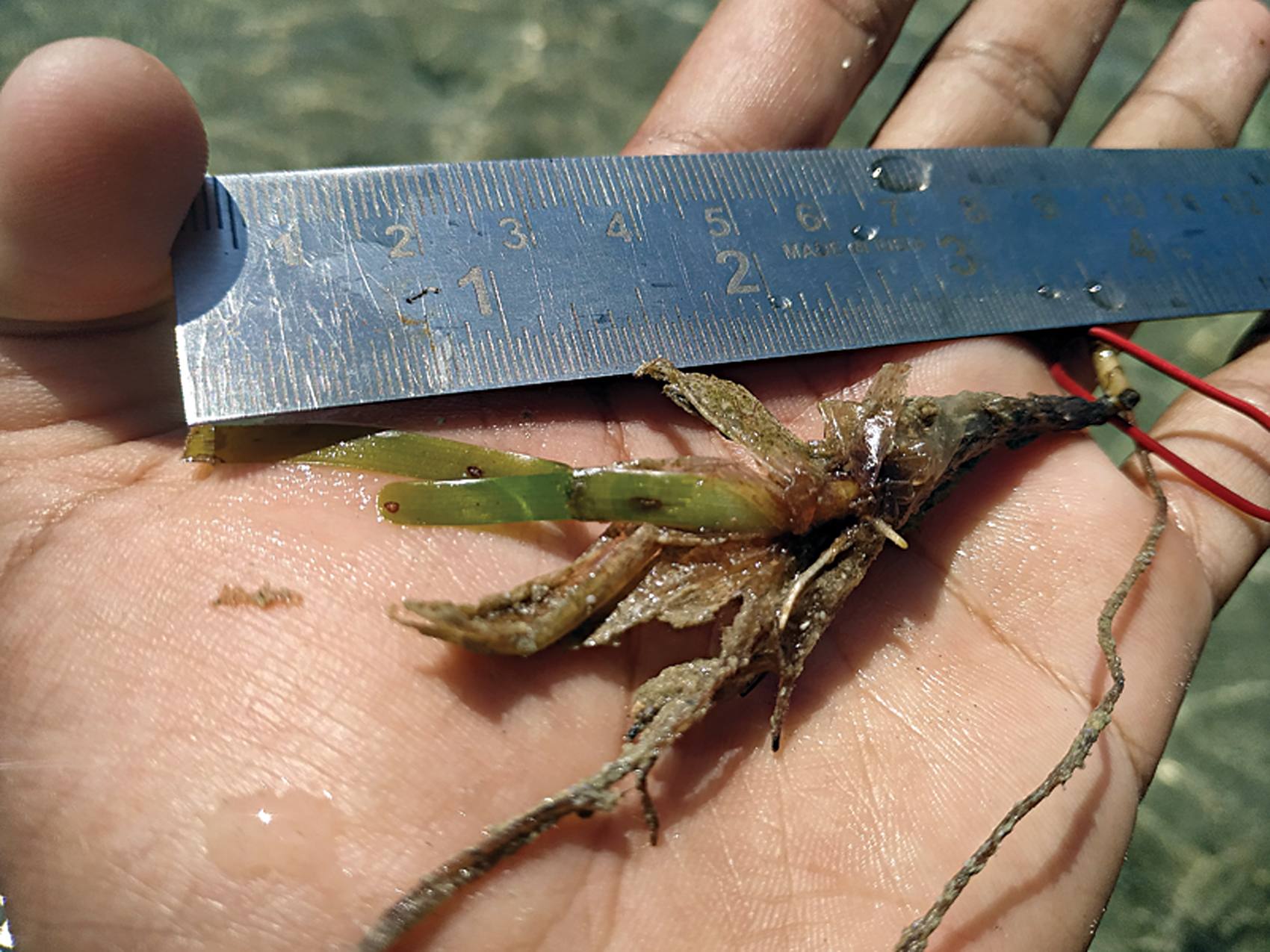
Seagrasses are flowering plants that grow submerged in shallow marine waters like bays and lagoons. They evolved from terrestrial plants about 70-100 million years ago. They help maintain water quality, provide food for many animals such as the dugong, and are habitat for fishes, crabs and varied other species. Photo Courtesy: Rachana Rao.
I sample seagrass meadows along the coasts of the Andaman Island, often snorkelling and walking for hours each day. I study the ecological processes of environmental filtration and the competitive interactions in determining where each seagrass species grows, and whether and how the productivity of these critical plants changes across seasons. The limited diversity of seagrass species and their fast growth makes seagrass meadows a relatively easy system to study and experimentally ‘manipulate’. This allows us to test community ecology theories and even predict how the system might evolve over time. I am personally fascinated about the myriad ecosystem services that seagrass meadows provide.
My work is simple, yet satisfying. Somewhat like a quaint trail passing through a forest to reach the sea. I have faced hardships along the way – days when I felt crippled by circumstances and times when I was demotivated, felt I was stagnating and unable to think creatively. But these turned out to be lessons; small steps inching towards the sea. I had many companions who helped me through it all, while the naive introvert in me sang, “Don’t worry, be happy” to herself.”
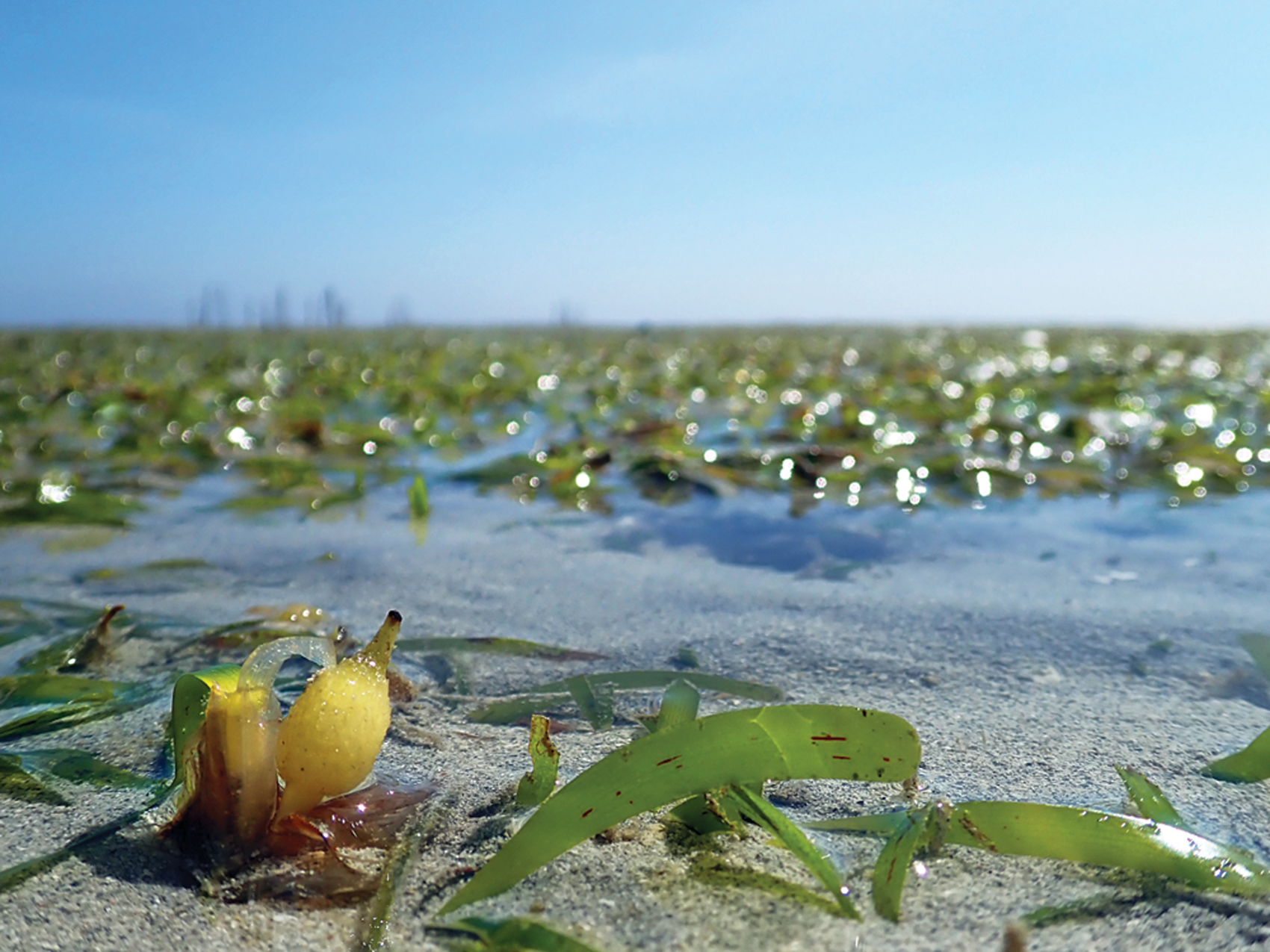
Seagrasses are flowering plants that grow submerged in shallow marine waters like bays and lagoons. They evolved from terrestrial plants about 70-100 million years ago. They help maintain water quality, provide food for many animals such as the dugong, and are habitat for fishes, crabs and varied other species. Photo Courtesy: Evan Nazareth.
Research Assistant, Nature Conservation Foundation
Aparna Krishnan | Trees
“Having spent most of my life in a big city, my initial exposure to nature came from wildlife documentaries and family trips to the urban outskirts. These experiences stirred my imagination towards working amidst nature as I simultaneously pursued my broad interest in science.
Standing in silent stillness, the trees of a forest hold many mysteries and stories untold – of the journeys they took to reach their location, and the trials of life they overcame to form the canopy that shelters myriads of creatures beneath. As a budding wildlife biologist working in the Western Ghats of India, I aspire to unravel these mysteries.
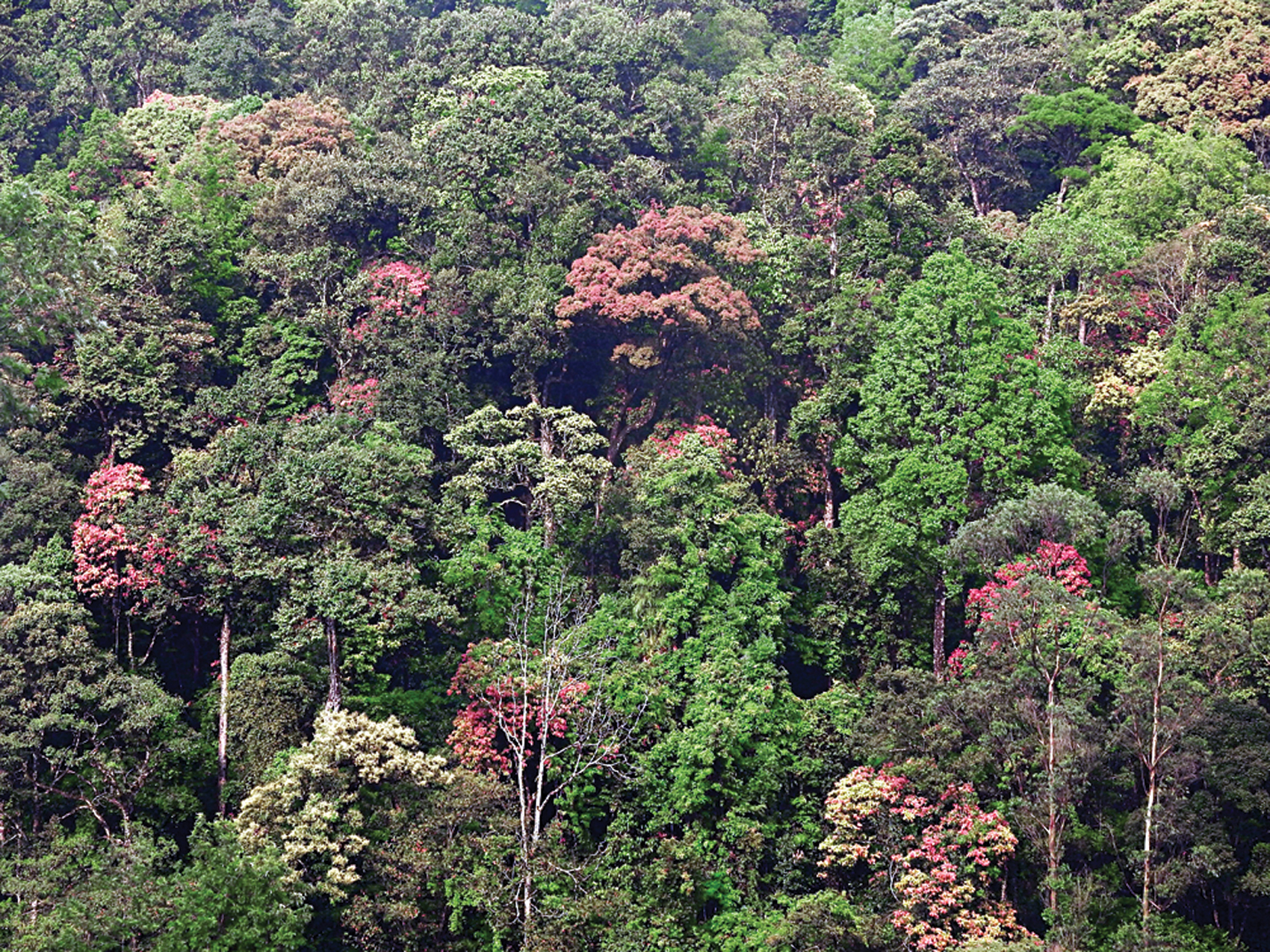
As age-old rainforests of the Western Ghats are being lost to anthropogenic pressures, scientists like Aparna Krishnan are working to ecologically restore patches and recover plant and animal species. Photo Courtesy: Aparna Krishnan.
While studying for my Bachelor’s degree in Biology, I was drawn into the world of ecology, a field that combined my love for science and nature. I soon enrolled in a Master’s degree programme in Wildlife Biology and conservation, and my interest and research focus shifted to what had thus far been a green blur – towards the majestic trees of the Western Ghats. I was fascinated by the manner in which animals influenced plant survival and distribution, and how, by observing animal movement and foraging patterns, the mechanisms structuring forest tree communities could be understood.
Today, vast swathes of forests in the Western Ghats have been lost and much of what remains have been reduced to fragments of degraded habitat. Through my research, I aim to understand how human modification of forests alters plant-animal interactions and, consequently, the forest tree community itself. For my Master’s degree, I investigated how changes in the mammal community alters the process of tree seed predation in rainforest fragments of the Anamalai Hills. I am equally interested in finding science-based solutions to remedy forest loss and degradation. My current research at the Nature Conservation Foundation explores how ecological restoration of rainforests can help recover plant and animal communities and their interactions.
Although I primarily study plants, field visits often throw up unexpected moments of sheer joy… sometimes from discoveries in my camera traps, other times to realise that I’m being watched by a curious Nilgiri marten! Experiences like these feed my soul and I am therefore perpetually on the lookout for the next surprise.”
Wildlife Biologist; Research Assistant, Nature Conservation Foundation
Parveen Shaikh | Indian Skimmers
“Indian Skimmers first caught my attention while flipping through The Book of Indian Birds by Sálim Ali. Black-and-white birds with bright orange-yellow beaks, with the lower bill longer than the upper, the birds were so named for their ability to skim the water surface to snap up fish!
In search of skimmers, I visited the exquisite Chambal river in 2011 on the Rajasthan side, from Sawai Madhopur. No luck, but I later joined the venerable Bombay Natural History Society (BNHS) as a Research Fellow in 2012, and while conducting fieldwork in Navi Mumbai, I spotted two skimmers amidst a large flock of terns! I was overjoyed and still feel the same excitement every time I observe them during my field work now.
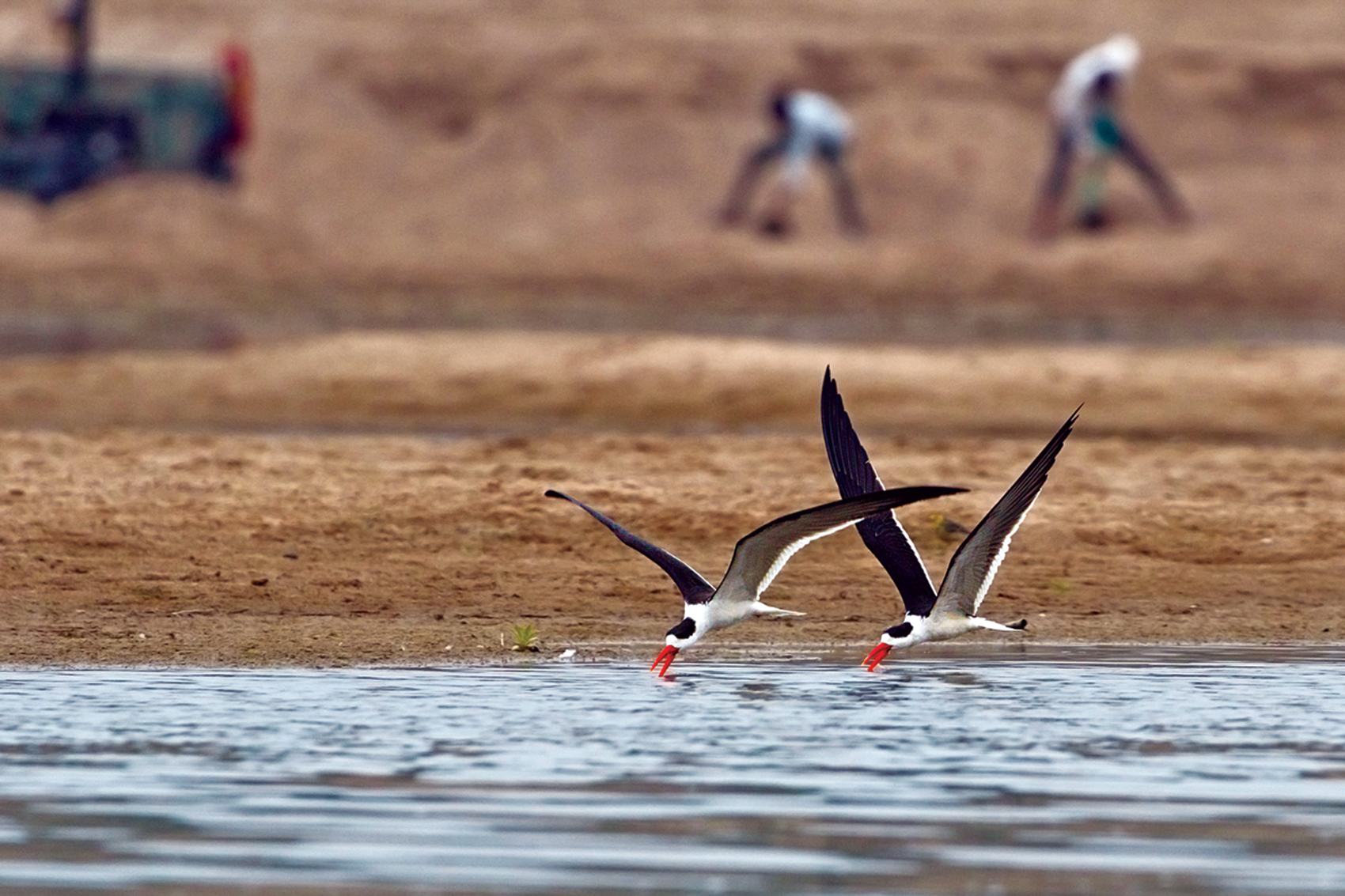
Indian Skimmers can be found nesting on the sandbars along the Chambal, where they face threats from predators like jackals, livestock and sandmining activities. A Nest Guardian Programme is involving local communities in their protection. Photo: Shantanu Ambulgekar.
In 2016, with support from the Conservation Leadership Programme, Future Conservationist Grant and BirdLife International, I began to study the status of skimmers at Chambal, a beautiful river landscape comprising blue waters, mighty sandbanks, tall ravines and curvy meanders. This is where I chose to monitor the nest distribution of skimmers… in the National Chambal Sanctuary, Madhya Pradesh, Rajasthan and Uttar Pradesh. The Chambal region has been infamous for the notorious activities of dacoits. Now dacoit-free, deciding to work here was my first challenge, but I took a leap of faith. I consider myself privileged as the field of wildlife biology is now not as challenging for women as it was decades ago.
Fieldwork can be both physically and mentally challenging. The nesting season happens to take place during peak summer in Central India. I would survey the river by boat and on foot between February and June to locate skimmer nesting colonies, and later to monitor nesting success. Our day inevitably started early to escape temperatures that often spiked to 400C and even higher while walking along sandbanks! I discovered that all was not well in paradise. We found that predation from free-ranging dogs, trampling of eggs and chicks by cattle, unpredictable weather events, human disturbance, and illegal sand mining, all combined, to lead to the low nesting success we observed.
We recently initiated a ‘Nest Guardian Programme’ to train villagers on monitoring and protecting skimmer nesting colonies. Plucky and dedicated, villagers chase dogs away and redirect cattle away from the very vulnerable nesting colonies. In the next 2022-23 nesting season, I will be able to ascertain the efficiency of our strategy and decide whether we should upscale the initiative and expand our project to a larger area, and perhaps to other river systems.
I guess what I want most is to do what I can to help the skimmer to keep skimming!”
Conservation Biologist, Bombay Natural History Society












